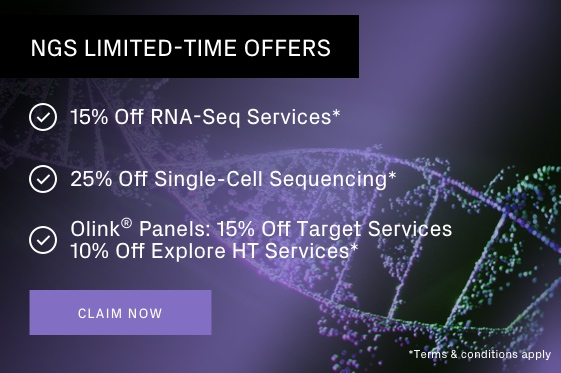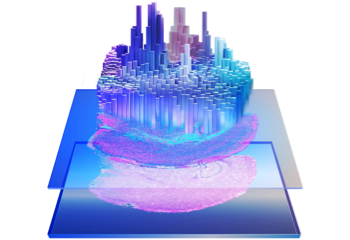Next Generation Sequencing (NGS)
Next generation sequencing (NGS) is a revolutionary technology that simultaneously adds nucleotides while copying a DNA strand. This process generates a signal corresponding to the nucleotide type and position of the growing DNA strand, enabling efficient DNA sequencing.
Our next generation sequencing services include standard and custom options for extraction, library preparation, sequencing, and bioinformatics from our state-of-the-art laboratory in Leipzig, Germany (European Headquarters), backed by our global network of genomics laboratories. We use the latest NGS technologies, including the new Illumina® NovaSeq® X series and PacBio® Revio™ platforms, to ensure you receive the highest quality data. Our Ph.D.-level scientists provide free consultations, real-time updates, and post-delivery assistance — supporting you throughout each step of your project.
As fellow scientists and genomics leaders, we continuously optimize our processes to deliver the best results that meet your budget and deadline. Whether it’s your first NGS project or your hundredth, we are committed to helping you find the next generation sequencing service that aligns with your research needs.
Find the right NGS solution with our interactive tool
Next Generation Sequencing Features & Benefits
What is Next Generation Sequencing (NGS)?
Next Generation Sequencing (NGS) is a technology in which nucleotides are added in parallel to the copying of a DNA strand. When nucleotides are incorporated into the growing DNA strand, a signal is generated that corresponds to the nucleotide type and position. Regardless of the distinct method used to capture nucleotide information, NGS provides a wide snapshot of the genome of interest with higher sensitivity and higher capacity with sample multiplexing.
There are several distinct methods used to generate and capture signals that translate into a DNA sequence.
Nanopore/ONT (Oxford Nanopore Technologies) Sequencing:
- Signal: Change in electrical current when a nucleotide is passed through a nanopore
- Method: The DNA sequence is determined by the change in electrical current
Illumina Sequencing:
- Signal: Nucleotides are labeled with fluorescence and added to the growing DNA strand
- Method: A camera captures an image of the fluorescence signal associated with the identity of each nucleotide; the order of each fluorescence signal translates to the sequence of DNA
Ion Torrent Sequencing:
- Signal: Hydrogen ions are released when a nucleotide is added, which leads to a change in pH
- Method: The sequence of DNA is determined by the changes in pH
PacBio (Pacific Biosciences) Sequencing:
- Signal: Also referred to as Single-Molecule Real-Time (SMRT®) sequencing, fluorescently labeled nucleotides are observed in real-time as DNA is polymerized
- Method: The sequence of DNA is determined by the timing and order of the incorporated fluorescently labeled nucleotides
What is the importance of next generation sequencing?
NGS is important for any molecular biologist because of its speed. With the ability to sequence millions of DNA strands simultaneously in a single run, the fast turnaround time allows for high sample volumes and the ability to sequence up to thousands of genes or gene regions. NGS technology enables the scientist to expand their DNA snapshot – gaining a wider perspective and understanding with comprehensive genomic coverage of their sample.
What is the difference between NGS and Sanger sequencing?
NGS sequences millions to billions of DNA fragments in parallel, allowing for significantly high-throughput and rapid, cost-effective generation of genomic data. Sanger sequencing traditionally produces longer read lengths than NGS, at lower throughput since DNA fragments are read one at a time. Sanger sequencing is advantageous for certain applications, such as validating DNA clones, sequencing long stretches of DNA, and resolving complex genomic regions.
Next Generation Sequencing Workflow
Extensive Quality Control is Performed at the Conclusion of Each Step of the Process
-

Experimental Design
1 -

-

Sample Preparation
2 -

-

Library Preparation
3 -

-

Sequencing
4 -

-

Bioinformatics Analysis
5 -

-

Project Delivery & Support
6
NGS PLATFORMS
For information on our NGS platforms as well as recommended configurations of your projects, please visit the NGS Platforms page. GENEWIZ from Azenta does not guarantee data output or quality for sequencing-only projects.

























